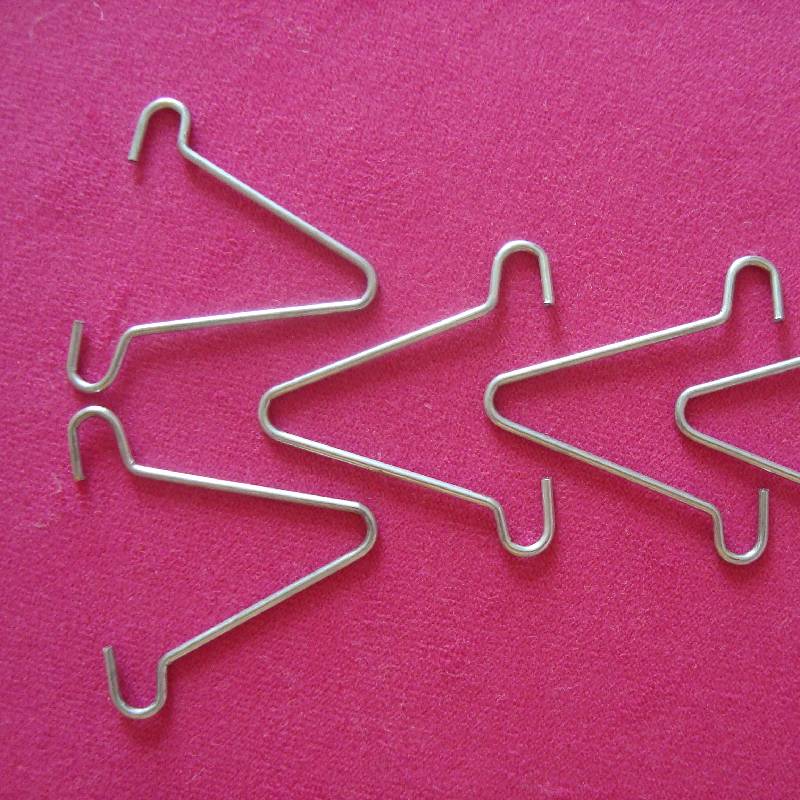
- Mobile Phone
- +8613931874955
- sales@cntcmetal.com
custom wire springs
Custom Wire Springs Tailoring Solutions for Diverse Applications
In the world of manufacturing and engineering, custom wire springs play a pivotal role in various applications, ranging from automotive to aerospace, medical devices, and consumer electronics. These springs are engineered to meet specific requirements, ensuring optimal performance in diverse environments. Understanding the intricacies of custom wire springs can enhance product design, reliability, and efficiency.
What Are Custom Wire Springs?
Custom wire springs are uniquely designed springs made from wire that is shaped, coiled, and formed to meet specific dimensions and mechanical properties. Unlike standard springs, which are mass-produced, custom springs are tailored to fit unique applications and requirements. This custom fabrication allows for the optimization of spring performance, making them ideal for any project requiring specific load, stress, or space constraints.
Types of Custom Wire Springs
There are several types of custom wire springs, each serving different functions
1. Compression Springs These springs are designed to compress under load and return to their original shape when the load is removed. They are commonly used in applications requiring force absorption, such as in automotive suspensions and mattresses.
2. Tension Springs Tension springs operate by pulling apart and exerting a force when stretched. They are employed in various applications, including motors, appliances, and machinery, where they help maintain tension in systems.
3. Torsion Springs Torsion springs are used to store rotational energy. They work by twisting along their axis, and they are vital components in devices like clothespins and mouse traps.
4. Leaf Springs Often used in automotive applications, leaf springs consist of layers of metal that provide a flexible and robust suspension system. Their design allows for the distribution of weight and support for varying loads.
Benefits of Custom Wire Springs
1. Precision Engineering Custom wire springs can be engineered to exact specifications, ensuring they meet the precise performance criteria needed for individual applications. This level of customization minimizes the risk of failure and maximizes efficiency.
custom wire springs

2. Material Selection Manufacturers can choose from a wide range of materials such as stainless steel, music wire, or even specialized alloys to create springs that are resilient to environmental factors, such as temperature fluctuations, corrosion, and fatigue.
3. Cost-Effectiveness While custom springs may have a higher initial cost compared to standard options, their precise functionality and reliability often result in lower lifetime costs due to reduced downtime and maintenance.
4. Versatility Custom wire springs can be designed for unlimited applications across various industries, making them suitable for both high-volume production and specialized projects.
The Manufacturing Process
The manufacturing process for custom wire springs typically involves several key steps
1. Design Collaboration between the client and spring manufacturer is crucial for defining specifications such as load requirements, dimensions, and material choices. Advanced CAD software may be used to create detailed designs.
2. Material Selection Based on the design requirements, the appropriate wire material is selected to ensure the proper mechanical properties and performance characteristics.
3. Fabrication The wire is then processed using methods such as coiling, bending, and machining to form the desired spring shape. This process may involve specialized equipment and techniques to ensure precision.
4. Testing and Quality Control Once manufactured, the springs undergo rigorous testing to ensure they meet quality and performance standards. This may include tensile testing, fatigue testing, and dimensional verification.
Conclusion
Custom wire springs are a critical component in modern engineering and manufacturing across various industries. Their ability to be tailored to meet unique design specifications makes them invaluable in applications where standard options are inadequate. By understanding the benefits and processes behind custom wire springs, engineers and designers can leverage these components to enhance product performance and ensure reliability in their designs. In a world increasingly driven by specialization and innovation, the importance of custom wire springs cannot be overstated.
share:
-
Why Sacrificial Formwork Is Redefining Underground ConstructionNewsJun.06,2025
-
The Structural Dynamics of Modern Concrete: How Snake Spacers Revolutionize Flexible ReinforcementNewsJun.06,2025
-
Snake Spacers Smart-Lock Concrete Reinforcement with Surgical PrecisionNewsJun.06,2025
-
Snake Spacers: Reinforcement Precision for Modern Concrete ProjectsNewsJun.06,2025
-
Snake Spacers Powering Concrete's Structural DNANewsJun.06,2025
-
Slither into Success: Snake Spacers' Precision Bite for Unbreakable ReinforcementNewsJun.06,2025
-
Sacrificial Formwork: Building Stronger, Faster, and Safer StructuresNewsJun.06,2025



















